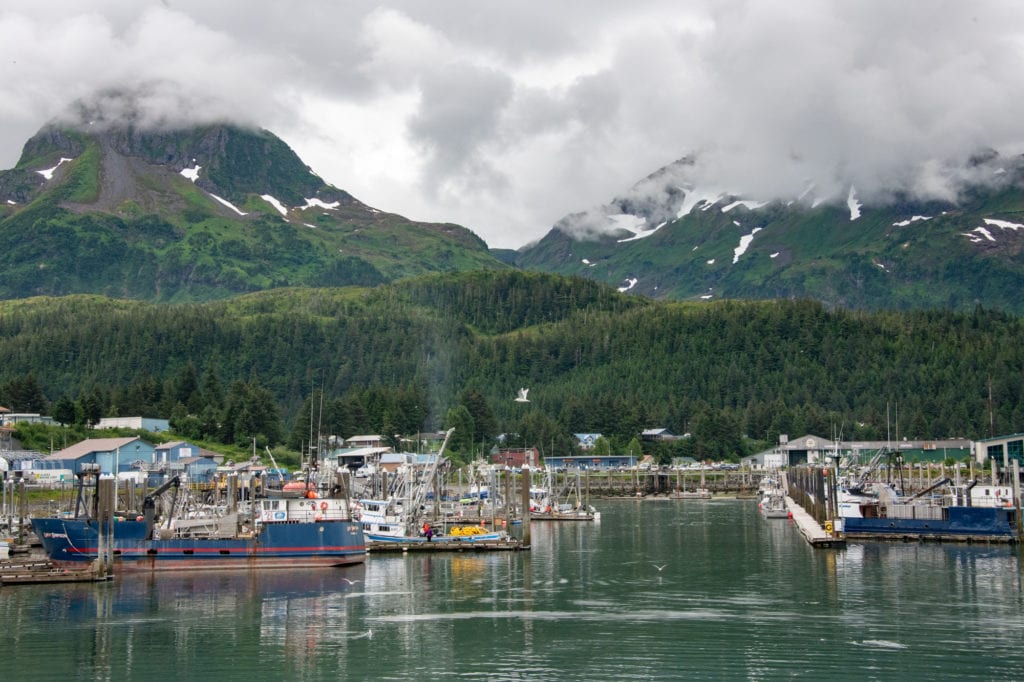
An estimated 800,000 pink salmon were harvested in Prince William Sound on Sunday, July 19, boosting the cumulative pink salmon harvest to an estimated 5.6 million common property fish,
and the overall estimated commercial catch for the fishery to 9.4 million salmon.
Still fishery managers in the Cordova office of the Alaska Department of Fish and Game said that the Valdez Fisheries Development Association needs some 409,000 humpies for brood stock and has recommended a closure within Port Valdez
VFDA reported on Monday, July 20 an improvement in pink salmon within the terminal harvest area and estimates of some 100,000-pink salmon within the special harvest area. Fisheries managers said time and area for future commercial fishing periods targeting VFDA pink salmon in Port Valdez will be based on continued run entry and brood stock needs.
The five-year even-year average (2010-2018) cumulative Prince William Sound humpy harvest through July 19 is 11.3 million fish, including 6.7 million pink, 1.8 million chum, 893,000 sockeyes and 4,000 kings. The largest harvest was in the Prince William Sound general seine area, with 6.4 million fish, including 5.5 million humpies, 824,000 chum and 38,000 red salmon.
The ADF&G preliminary statewide commercial salmon catch as of Tuesday, July 21, stood at over 53 million fish, including 39.3 million sockeye, 10 million humpies, 3.6 million chum, 158,000 kings and 153,000 cohos. The majority of those sockeyes, 35.6 million fish, were harvested in Bristol Bay.
Last week’s commercial harvest pushed the statewide catch over 50 million salmon, weighing in at an estimated 240 million pounds. While two weeks of strong fishing in Bristol Bay have lifted statewide totals, other areas of the state remain below expectation, noted the McDowell Group’s fisheries economist Garrett Evridge, who produces weekly in-season commercial salmon reports for the Alaska Seafood Marketing Institute.
Bristol Bay has contributed about 90 percent of the total, with the region exceeding the ADF&G projection of 34.5 million fish. Other sockeye fisheries are behind the typical pace, with Kodiak and the Alaska Peninsula and Aleutian Islands faring better than Prince William Sound, Cook Inlet and Southeast Alaska, Evridge said.
The pink salmon harvest pace is similar to 2018 and slightly below the 10-year average for even-numbered years. The peak of the statewide pink harvest is typically in the last week of July or first week of August. According to the state’s harvest projection, Prince William Sound will contribute most pink production this year, followed by Southeast Alaska and Kodiak. The Alaska Peninsula and Aleutian Islands have exceed that region’s modest 2020 projection for the species.
Keta harvests continue to disappoint, Evridge said. Landings of some 3 million fish are about 54 percent lower than last year and 68 percent behind the five-year average. Kodiak and the Alaska Peninsula and Aleutian Islands are faring the best, and current figures exclude a full week of fishing for both regions due to confidentiality requirements. The Arctic-Yukon-Kuskokwim and Southeast Alaska are 89 percent and 66 percent behind 2019 respectively.
Coho production is also lagging behind 2019 and the five-year average for cohos, Evridge noted.
Statewide king landings are about a third lower than the 2019 pace, though Southeast production is relatively strong,
ADF&G posts preliminary daily in-season updates commercial salmon harvest online at https://www.adfg.alaska.gov/index.cfm?adfg=commercialbyfisherysalmon.bluesheet





